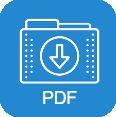What factors should be taken into account when selecting the appropriate size and type of brass wrapped bushing bearings for a specific application
Author:admin Date:2023-10-11
Selecting the appropriate size and type of brass-wrapped bushing bearings for a specific application requires careful consideration of various factors to ensure optimal performance and longevity. Here are the key factors to take into account:
Load Requirements:
Consider the magnitude and direction of the loads (radial, axial, or a combination) that the bearing will need to support. Ensure that the chosen bushing bearing can handle the expected loads without premature wear or failure.
Operating Speed:
Determine the rotational speed or linear velocity at which the bushing bearing will operate. This is crucial in selecting a bearing material and design that can handle the desired speed without excessive friction or heat generation.
Environmental Conditions:
Evaluate the environmental factors, such as temperature, humidity, and exposure to corrosive substances (e.g., chemicals, moisture). Choose bushing bearings that are compatible with the operating environment to prevent degradation or corrosion.
Shaft Material and Tolerance:
Consider the material and hardness of the shaft that the bushing will run on. Ensure that the bearing is compatible with the shaft material, and confirm that the shaft meets the specified tolerances to ensure a proper fit.
Lubrication:
Determine the lubrication method (grease, oil, or self-lubricating) that suits your application. Proper lubrication is essential for reducing friction and wear. Some bushing bearings come with integrated lubrication systems.
Alignment and Tolerance:
Ensure proper alignment and tolerance during installation to prevent misalignment issues that can lead to premature wear or damage.
Clearance and Preload:
Consider the required clearance or preload in the bearing to accommodate thermal expansion, contraction, and axial movement. This is especially important in applications with temperature variations.
Size and Geometry:
Choose the appropriate size and design of the bushing bearing to match the shaft and housing dimensions. Pay attention to the internal and external diameters, length, and any flanges or grooves that may be needed.
Noise and Vibration Requirements:
If your application has strict noise or vibration requirements, select bushing bearings designed to minimize these factors.
Maintenance Requirements:
Consider the desired maintenance schedule and access to the bearing. Self-lubricating or maintenance-free bushing bearings might be preferable for applications where regular maintenance is challenging.
Budget Constraints:
Balance the performance requirements with the available budget. Different types of bushing bearings vary in cost, so choose the most cost-effective option that meets the necessary specifications.
Regulatory Compliance:
Ensure that the selected bearing complies with any industry or regulatory standards that may apply to your specific application.
Supplier and Quality:
Select a reputable supplier or manufacturer known for producing high-quality bushing bearings. Consider factors like warranties and product support.
Expected Service Life:
Estimate the expected service life of the bushing bearing and ensure it aligns with the intended application's lifespan.



 English
English Español
Español Deutsch
Deutsch
















